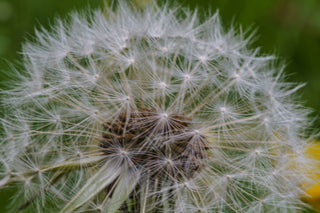Allergies are part of everyday life for many people: a runny nose at the first sign of pollen, sensitive skin, or pet dander causing constant sneezing. Medications like antihistamines or cortisone may help, but they often have side effects. More and more studies show that certain probiotics can be a natural alternative. However, not every strain has the same effect – two stand out in particular: Lactobacillus paracasei LP-33 and GMNL-133 .
LP-33: The classic remedy for hay fever
LP-33 is one of the most extensively studied probiotic strains when it comes to allergies. People with hay fever report that typical symptoms such as a runny nose, watery eyes, or constant sneezing improve significantly when they take LP-33 regularly. In some studies, it was even as effective as a common antihistamine—only without fatigue or other side effects. Children with atopic dermatitis also benefit because LP-33 calms the immune system and strengthens the skin barrier.
GMNL-133: Powerful helper for atopic dermatitis
Not as well known yet, but at least as exciting, is GMNL-133. This strain demonstrates its strengths particularly in atopic dermatitis: Itching and redness subside, and the skin becomes more resilient. Unlike cortisone ointments, GMNL-133 works from within without causing the skin to thin. Some studies even suggest that the positive effects last longer, even if the probiotic is discontinued for a while.
Other probiotic strains in comparison
Of course, there are many other probiotics that have been studied for allergies. Some can also help, although the results are not quite as conclusive as those for LP-33 and GMNL-133. For example, Lactobacillus salivarius has proven effective in children with house dust mite allergies because it reduced the need for medication. Lactobacillus helveticus helped people with chronic nasal congestion, and Lactobacillus reuteri improved not only breathing but also sleep. Regarding skin problems, Lactobacillus plantarum has shown improvement in atopic dermatitis symptoms in some studies.
Probiotic mixtures with multiple strains are also interesting: Combinations of Lactobacillus and Bifidobacteria improved the quality of life of hay fever sufferers, especially during pollen season. Other analyses have shown that Saccharomyces boulardii , a yeast strain, can be particularly effective in reducing the overall symptoms of rhinitis. However, the results of studies on all these strains are mixed—sometimes they show good results, while others show little difference.
Overview of the most important strains for allergies
| Probiotic | Typical areas of application | Special features |
|---|---|---|
| LP-33 | Hay fever, neurodermatitis, pet allergy | Well studied, works similarly to antihistamines |
| GMNL-133 | Especially neurodermatitis and pet hair allergy | Comparable to cortisone, but without side effects |
| Lactobacillus salivarius | House dust mite allergy | Especially helpful for children |
| Lactobacillus helveticus | Chronically blocked nose | Relieves nasal blockages |
| Lactobacillus reuteri | Allergic rhinitis | Also supports better sleep |
| Lactobacillus plantarum | Atopic dermatitis in children | Reduces inflammatory markers and itching |
| Saccharomyces boulardii | Allergic rhinitis | Works well on overall symptoms |
| Mixed preparations | Hay fever, rhinoconjunctivitis | Improvement of quality of life, especially in season |
Conclusion
Not every probiotic is equally effective for allergies. While many strains show some interesting potential, two clearly stand out: LP-33 and GMNL-133 . Both are particularly well-tolerated, have a targeted effect on the immune system, and demonstrate strong effects on hay fever, atopic dermatitis, and sometimes even pet allergies. Anyone looking for natural support should definitely keep an eye on these two strains—ideally in consultation with a doctor or therapist to find the best combination.
FAQ – Frequently asked questions about probiotics for allergies
Do probiotics work for every type of allergy?
Not necessarily. The benefits are best documented for hay fever, atopic dermatitis, and house dust mite allergies. Regarding pet allergies, there are only hints so far, but few direct studies.
How quickly will I notice an effect?
Many sufferers report initial improvements after two to four weeks. However, for a sustained effect, probiotics should be taken for several weeks or even the entire allergy season.
Are LP-33 and GMNL-133 also suitable for children?
Yes, both strains have also been studied in children. LP-33, in particular, has proven effective and well-tolerated in pediatric atopic dermatitis and allergic rhinitis.
Can I combine probiotics with antihistamines or cortisone?
Yes, that's easily possible. Some studies even show that the combination reduces the need for medication. Probiotics don't always replace medication, but they can be a useful complement.
Are there any side effects?
Probiotics such as LP-33 or GMNL-133 are considered very safe. Some people initially experience mild bloating or stomach rumbling, which usually subsides after a few days. No serious side effects are known.
Which products are recommended?
It's important that the preparations specify the exact bacterial strain, e.g., Lactobacillus paracasei LP-33 . Only then can you be sure that it's the strain being studied. Products with unclear names like "Lactobacillus paracasei mixture" are less reliable.














